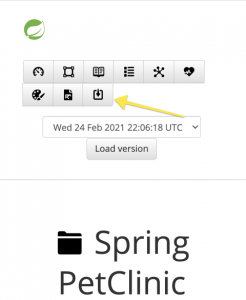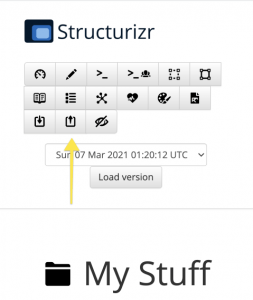Structurizr Examples: What Will You Learn?
- What is Structurizr?
- What are the use cases for Structurizr?
- How do I create diagrams with Structurizr?
- How do I use the Structurizr CLI?
- Where do I learn more about Structurizr?
The Basics
Structurizr is a diagram generation tool created by Simon Brown, the creator of the C4 Model. The tool’s primary focus is the rapid generation of several diagrams with the same components. Maybe Simon was tired of diagramming tools that make you repeat yourself? If so, I share the sentiment.
It’s free for most use cases.
Primary Use Cases
- Creation of architectural diagrams
- Capture architecture decisions
- Diagram review
- Saving time!
When to Use Structurizr?
When you need to create a diagram quickly, Structurizr is the tool for you. It’s a great tool for capturing architecture decisions and sharing them with your team. For more on software architecture best practices, check out our guide on software design patterns.
Structurizr Examples: Building Diagrams
Building diagrams can be very tedious, and Structurizr addresses this tedium. A typical workflow in Structurizr looks like this.
- Add diagram elements
- Create relationships
- Layout your diagram
- Download your diagrams
The CLI
Edit diagrams using the Structurizr command-line interface. You can follow these steps to edit your workspace if you’re on macOS.
# Install docker or some other docker-like app
cd /tmp
wget -P /tmp https://raw.githubusercontent.com/structurizr/examples/main/dsl/getting-started/workspace.dsl
docker pull structurizr/lite
docker run -it --rm -p 8080:8080 -v /tmp:/usr/local/structurizr structurizr/lite
open http://localhost:8080/ # Start editing!
# Update /tmp with your preferred directory
Structurizr Examples: Model Reuse
I use Structurizr Lite to create diagrams with code. I’ve found a way to reuse models using this method. Reusing models keeps the management of links to component details simple.
workspace "Reuse Models" "Demonstrate Model Reuse" {
model {
customer = person "Customer" "Customer" "Customer"
website = softwareSystem "Website" "Website" "Website"
system1 = softwareSystem "system1" "" "" {
rel1 = customer -> website "Relationship scoped to system1"
}
system2 = softwareSystem "system2" "" "" {
rel2 = website -> customer "Relationship scoped to system2"
}
}
views {
systemContext system1 {
include customer
include website
exclude rel2
autoLayout
}
systemContext system2 {
include customer
include website
exclude rel1
autoLayout
}
}
Structurizr Tutorial
Learning how to use Structurizr will take time. I’ve barely scratched the surface of what it can do, but luckily you can get help on structurizr.com. A structurizr tutorial is available to help you get started. It starts with the basics and moves on to more advanced topics. For more on software architecture fundamentals, check out our guide on software architecture.
Structurizr Examples: Spring PetClinic
I like to learn with examples. I found the Spring PetClinic example to be the best way to learn how to use it. Try exporting the workspace from the workspace menu.

Then import the workspace so you can explore how Structurizr created those diagrams.

Learn Structurizr - Beyond the Basics
- Help on structurizr.com
- The Spring PetClinic Example
- Usage recommendations
- Fiddle with the Structurizr DSL
Related Content
- Software Design Patterns - Master common design patterns in software architecture
- Software Architecture - Learn about software architecture fundamentals
- The Pragmatic Programmer - Essential reading for software developers
- Death by 1000 Cuts - Understanding technical debt and its impact
References
- The Structurizr Website
- Structurizr CLI — A command-line interface.
- Structurizr DSL Editor — An editor for the domain-specific language.
- Getting started with Structurizr Lite — A free version you can run on your machine.
- Structurizr Puppeteer — Automate the usage of the Structurizr UI.
- Simon Brown’s Website
- The C4 Model
Other Learning
- How Do I Learn Effectively?
- Learn 3D Graphics
- Learn Amazon Athena
- Learn Asymptotic Notations
- Learn AWS Amplify
- Learn Color Theory
- Learn Data Visualization
- Learn Design Systems
- Learn ECS
- Learn GitHub
- Learn How To Prioritize
- Learn Java
- Learn Java Coding Challenges
- Learn JavaScript
- jq Cookbook: Learn jq with Practical Examples
- Learn Kubernetes
- Learn Neovim
- Learn Python
- Learn Rendanheyi
- Learn SignalFx
- Learn Software Architecture
- Learn Software Design Patterns
- Structurizr Examples: Learn Structurizr with Practical Examples
- Learn systemd
- Learn Terraform
